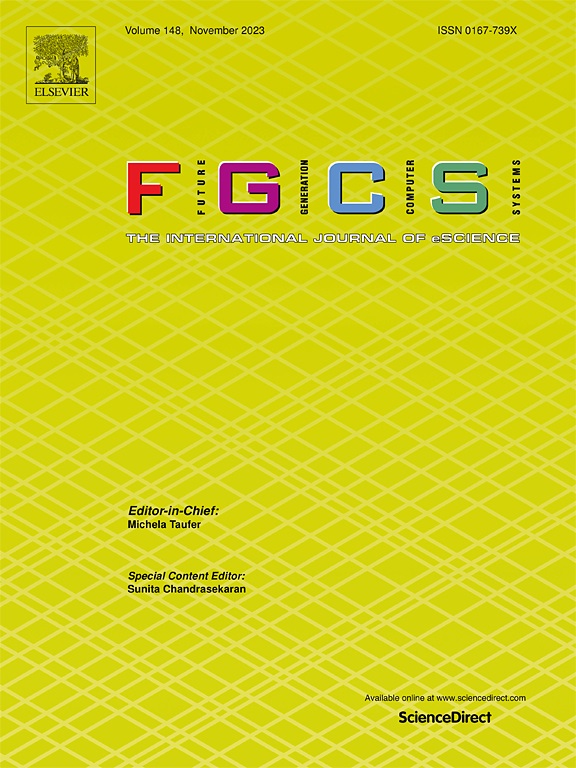在邻域信息有限的自愈系统中,将节点中心度量与节点复原力相关联
IF 6.2
2区 计算机科学
Q1 COMPUTER SCIENCE, THEORY & METHODS
Future Generation Computer Systems-The International Journal of Escience
Pub Date : 2024-10-10
DOI:10.1016/j.future.2024.107553
引用次数: 0
摘要
弹性系统必须自我修复其组件和连接,以便在发生故障时保持拓扑结构和功能。这种能力对于许多网络化和分布式系统(如虚拟化平台、云服务、微服务架构和分散式算法)来说至关重要。本文以一种自愈方法为基础,在这种方法中,故障节点会根据拓扑信息自动重建和重新连接,拓扑信息保存在每个节点的邻域中。本文提出了两个新贡献。首先,它提供了一种通用方法,用于确定每个节点已知网络邻域的最小大小,以便在一定的节点故障概率下恢复系统的组件互连拓扑。这改进了之前的建议,因为只需通信和存储本地信息,从而减少了资源消耗。其次,它采用了复杂网络理论的分析技术,将节点的恢复概率与其在自愈系统中的接近中心度相关联。这样就可以通过分析系统的拓扑特征和重新连接弱连接节点来加强系统的恢复能力。在具有各种拓扑特征的不同系统上进行的大量模拟实验支持了这些贡献。获得的结果证实,向更多邻居传播拓扑信息的节点更有可能被恢复,但需要更多的资源。提出的建议可帮助从业人员:识别分布式系统中最脆弱的节点;考虑通过增加每个节点的连通性来采取纠正措施;以及在系统恢复能力和成本之间建立适当的折中。本文章由计算机程序翻译,如有差异,请以英文原文为准。
Correlating node centrality metrics with node resilience in self-healing systems with limited neighbourhood information
Resilient systems must self-heal their components and connections to maintain their topology and function when failures occur. This ability becomes essential to many networked and distributed systems, e.g., virtualisation platforms, cloud services, microservice architectures and decentralised algorithms. This paper builds upon a self-healing approach where failed nodes are recreated and reconnected automatically based on topology information, which is maintained within each node’s neighbourhood. The paper proposes two novel contributions. First, it offers a generic method for establishing the minimum size of a network neighbourhood to be known by each node in order to recover the system’s component interconnection topology under a certain probability of node failure. This improves the previous proposal by reducing resource consumption, as only local information is communication and stored. Second, it adopts analysis techniques from complex networks theory to correlate a node’s recovery probability with its closeness centrality within the self-healing system. This allows strengthening a system’s resilience by analysing its topological characteristics and rewiring weakly-connected nodes. These contributions are supported by extensive simulation experiments on different systems with various topological characteristics. Obtained results confirm that nodes which propagate their topology information to more neighbours are more likely to be recovered; while requiring more resources. The proposed contributions can help practitioners to: identify the most fragile nodes in their distributed systems; consider corrective measures by increasing each node’s connectivity; and, establish a suitable compromise between system resilience and costs.
求助全文
通过发布文献求助,成功后即可免费获取论文全文。
去求助
来源期刊
CiteScore
19.90
自引率
2.70%
发文量
376
审稿时长
10.6 months
期刊介绍:
Computing infrastructures and systems are constantly evolving, resulting in increasingly complex and collaborative scientific applications. To cope with these advancements, there is a growing need for collaborative tools that can effectively map, control, and execute these applications.
Furthermore, with the explosion of Big Data, there is a requirement for innovative methods and infrastructures to collect, analyze, and derive meaningful insights from the vast amount of data generated. This necessitates the integration of computational and storage capabilities, databases, sensors, and human collaboration.
Future Generation Computer Systems aims to pioneer advancements in distributed systems, collaborative environments, high-performance computing, and Big Data analytics. It strives to stay at the forefront of developments in grids, clouds, and the Internet of Things (IoT) to effectively address the challenges posed by these wide-area, fully distributed sensing and computing systems.

 求助内容:
求助内容: 应助结果提醒方式:
应助结果提醒方式:


